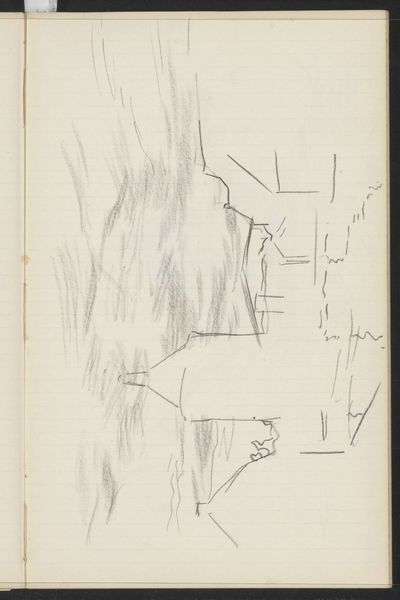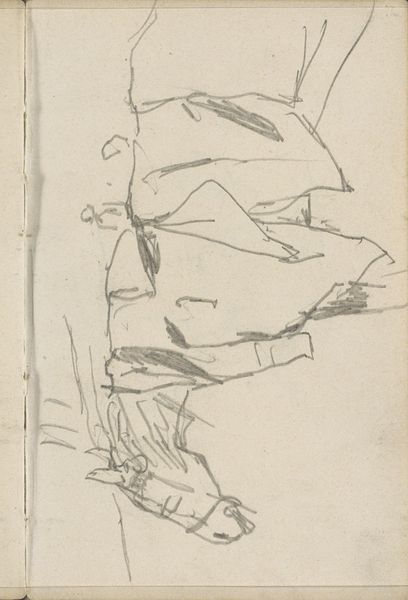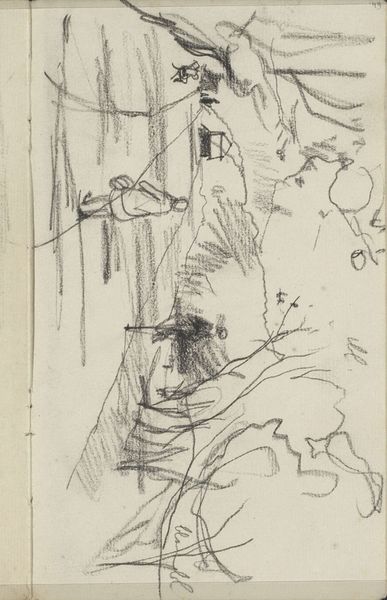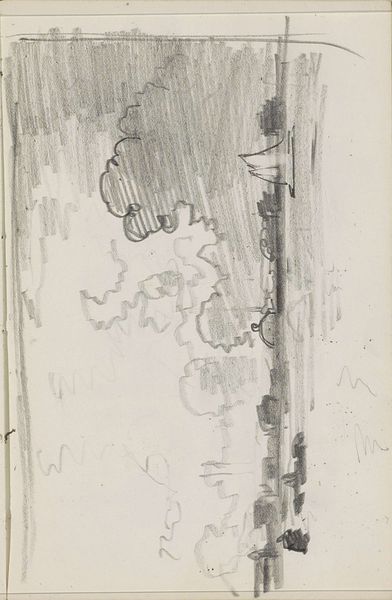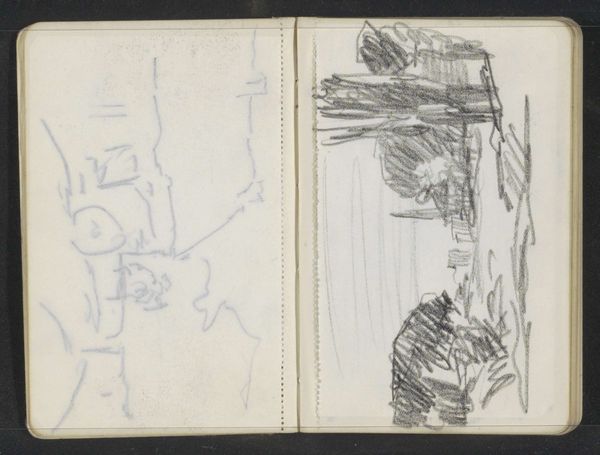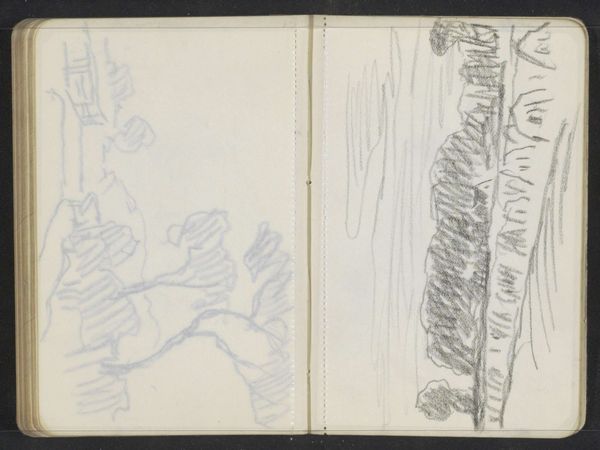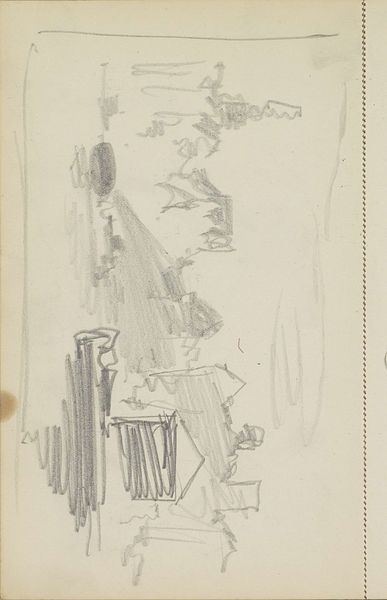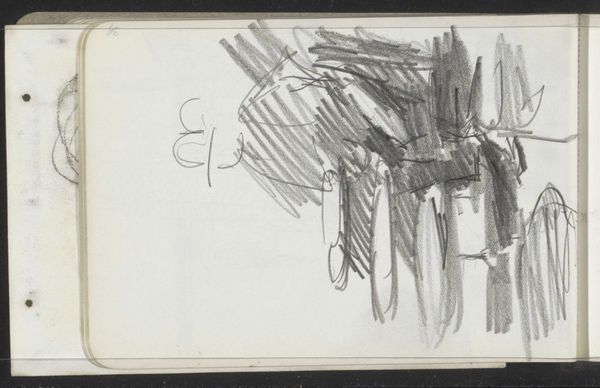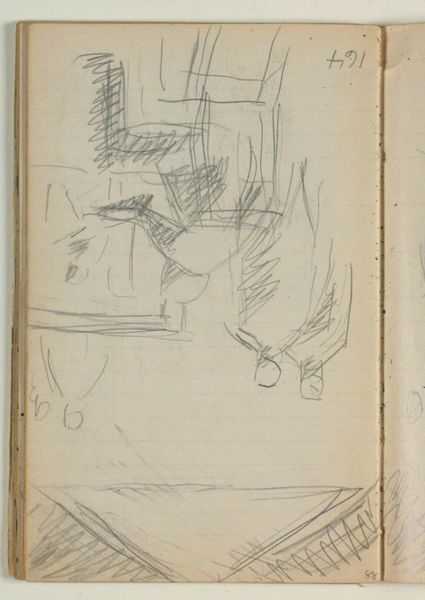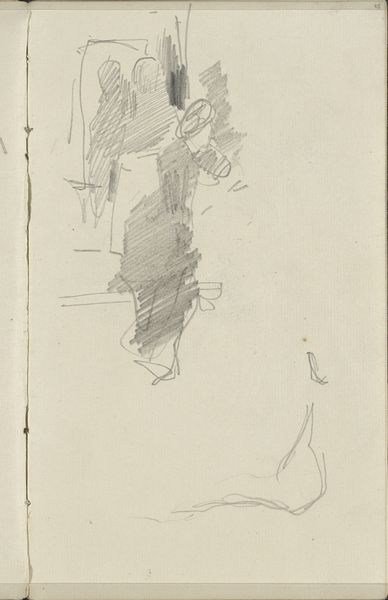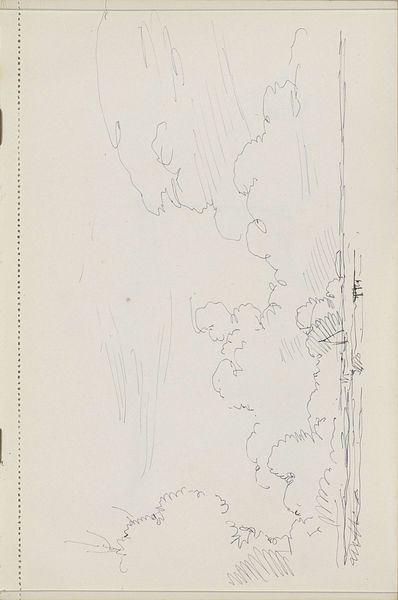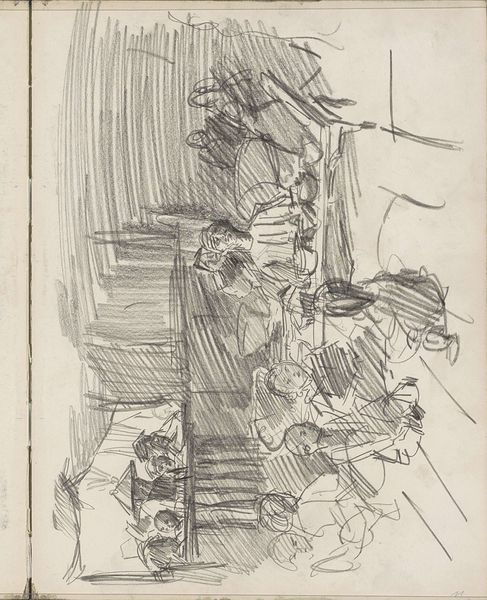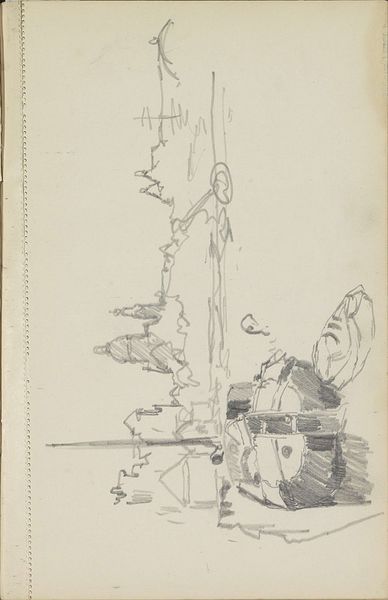
Wolkenlucht boven een landschap met water en zeilschepen 1900 - 1931
0:00
0:00
willembastiaantholen
Rijksmuseum
Copyright: Rijks Museum: Open Domain
Editor: Here we have Willem Bastiaan Tholen's "Wolkenlucht boven een landschap met water en zeilschepen," dating between 1900 and 1931. It's a pencil and ink drawing. It has a fleeting, dreamlike quality. What can you tell me about this piece? Curator: This sketchbook page offers a privileged look into the artistic labor behind Tholen's more finished works. Consider the rapid strokes, the reworking of cloud formations, the visible ruled lines of the notebook. What does this reveal about the means by which Tholen translated the atmospheric conditions into a tangible representation? Editor: So, instead of a finished artwork, it's a record of the artist's process? Curator: Exactly. Think about the socio-economic context: artists relied on studies like these to produce marketable images. How might the pressure of production influence these marks, the very materiality of the sketch? Is this a form of labor? And how does this piece challenge our conventional understanding of 'high art'? The act of drawing in situ, sketching, implies the artist interacting with nature. Editor: It's interesting to think about it as part of the artistic ‘manufacturing’ process, not just inspiration. And how the need to sell art influenced how artists work. Curator: Right. Notice how Tholen economizes his lines, achieving maximum effect with minimal effort. It is in a way about time management in labor. What does that say about the value of his time, his art, and ultimately, the market forces at play? Editor: I see it now as less about the clouds and more about the business of art, the raw materials that get it off the ground and into people’s homes. Curator: Precisely. By focusing on the materials and methods, we gain a deeper understanding of the art world ecosystem.
Comments
No comments
Be the first to comment and join the conversation on the ultimate creative platform.
